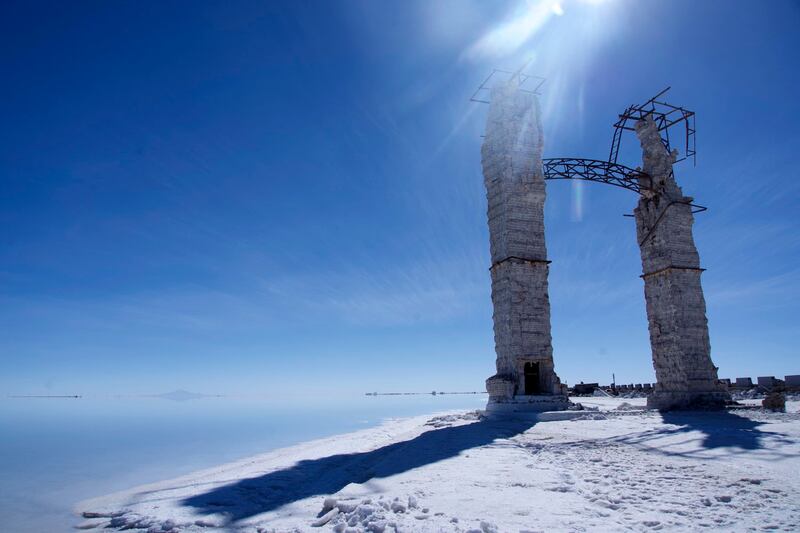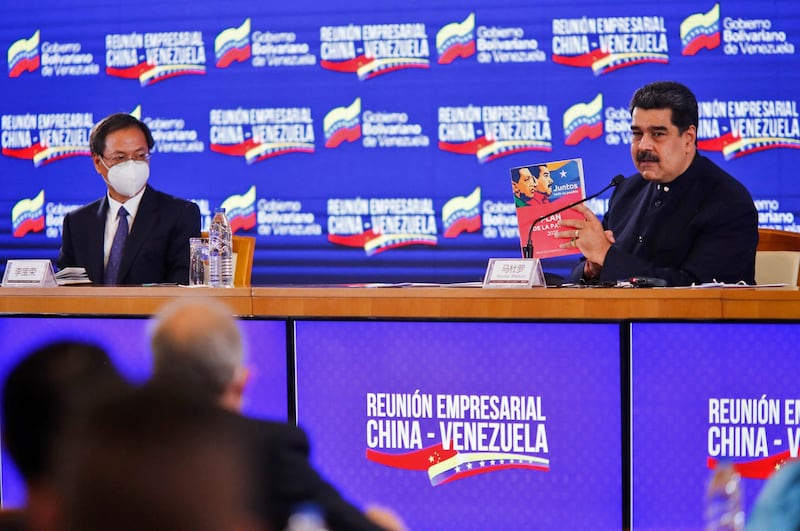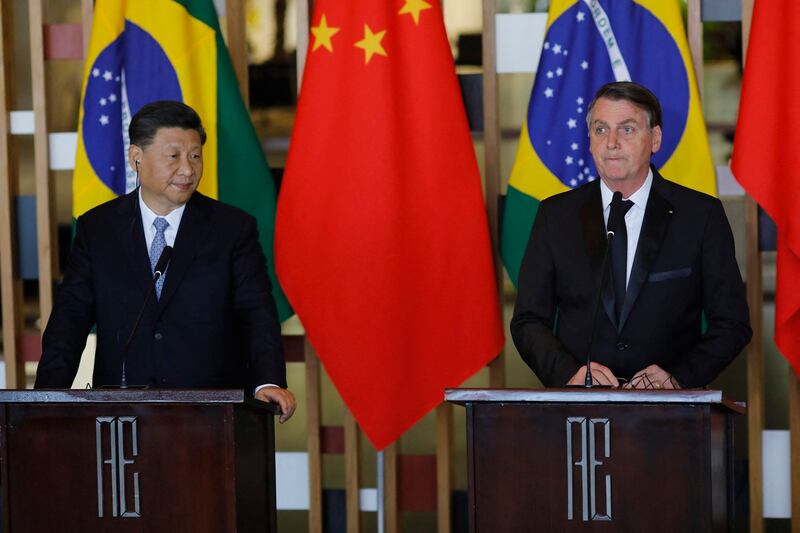Chinese state-run companies and banks have been investing in electrical utilities in Latin America, generating income for the firms and creating leverage for Beijing to advance its interests in a region sometimes referred to as “America’s backyard.”
One of the most comprehensive reports on the subject has been written by R. Evan Ellis, research professor of Latin American Studies at the U.S. Army War College Strategic Studies Institute.
COVID-19 caused economic setbacks in a number of these countries, so they may now be more likely to agree to some Chinese projects that they would have rejected in the past, Ellis says.
The Wall Journal has recently analyzed data from a number of Latin American nations that reveal a staggering COVID-19 death toll.
According to The Journal, the country with the world's highly daily death rate as of June 21, was landlocked Paraguay, with 19 times as many deaths as the United States per capita.
And with 50 million people, Colombia has recorded about 4,200 deaths from COVID-19 over the past week—about 50 percent more than the whole of Africa.
Fewer than one in 10 people in Latin America have been vaccinated, according to the Pan American Health Organization (PAHO).
Carissa F. Etienne, director of PAHO, has at the same time urged leaders of the Group of Seven (G7) nations to speed up delivery of a billion vaccines they promised to developing nations by the end of 2023.
China has meanwhile been importing about 75 percent of the world’s traded iron ore and some 60 percent of its copper ore from Latin American countries for years.
Latin American countries have joined China’s Belt and Road Initiative, often referred to as the BRI, which funds overseas infrastructure projects in nearly 70 countries.

BRI enlists 18 of 31 countries
David Dollar, a senior fellow at the U.S.-based-Brookings Institution, says that the BRI is controversial in the West because of a lack of transparency that makes it difficult to get reliable information on the finances of the initiative as well as on specific projects and their terms.
According to the U.S.-based Atlantic Council, Panama in November 2017 became the first Latin American country to officially endorse the BRI, five months after switching diplomatic ties from Taiwan to China.
In the next two years, 18 of the 33 countries in the region would join the BRI, with some notable exceptions.
Argentina, Brazil, Colombia, and Mexico—the four largest economies in the region, accounting for nearly 70 percent of its GDP—have closely followed the initiative, but have yet to sign on. They are expected to do so at some point, however.
For many Latin American governments and companies, the BRI offers an opportunity to expand access to China, a growing export destination and source of external financing.
Over the past 20 years, bilateral trade grew twenty-five times, from $12 billion in 1999 to $306 billion in 2018, placing China as Latin America’s second-largest trading partner after the United States.
Since 2005, Chinese banks have provided more than $141 billion in loan commitments to Latin America, exceeding, in several years, the lending of the World Bank, the Inter-American Development Bank, and the Development Bank of Latin America combined.
China is also becoming an increasingly important foreign direct investor for the region, especially through mergers and acquisitions.
But the BRI has yet to spur a visible surge of Chinese commercial activities in Latin America.
China has been less active in promoting the BRI in the Western Hemisphere than in other regions. The six BRI economic corridors across Eurasia still take top priority globally.

Low-risk gamble
There are concerns that the BRI may cause confrontations with the United States, Latin America’s long-standing hemispheric ally and most important commercial partner, which has consistently warned about the BRI’s “debt-trap diplomacy.”
Despite the seeming lack of immediate gains associated with BRI, however, most Latin American and Caribbean countries appear to have responded neutrally or favorably to the initiative.
On the risk side, many consider Chinese lending alone to be insufficient to trigger systemic debt issues in most Latin American economies. And as a result, for many in Latin America, the BRI appears a low-risk gamble for greater economic growth and international cooperation.
The high concentration of Chinese activity in Latin America’s agricultural sectors has meanwhile placed a heavy strain on water supplies and increased deforestation and greenhouse gas emissions, according to a 2015 study coordinated by Boston University’s Global Economic Governance Institute.
Some projects, such as hydroelectric projects, have triggered protests from indigenous groups in several Latin American countries
China appears to have its most positive and constructive relationship in Latin America with Uruguay, one of the smallest nations in the region.
Uruguay’s day-to-day relationship with the PRC is shaped by two key figures: China’s ambassador to Uruguay, Wang Gang, and Uruguay’s ambassador to China, Juan Fernando Lugris Rodríguez.
According to Ellis, observers generally regard Wang as low-key and effective, quietly working with Uruguayan institutions, facilitating significant Chinese support to Uruguay during the COVID-19 pandemic, and showing sensitivity to the distrust that many people in Uruguay have toward China.

Arms for Venezuela
China in recent years has also sold self-propelled artillery, armored vehicles, rocket launchers, helicopters, and fighter planes to a variety of Caribbean and Latin American nations.
As Ellis noted in Latin America and the Asian Giants, a book published in 2016 on Latin America's evolving ties with China and India, Venezuela provided China with its first opportunity to sell sophisticated military systems in the region in 2005.
Within a few years, China then began selling weapons to Bolivia, which earlier had received Chinese donations of rifles and anti-aircraft weapons, and Ecuador – under a policy that appeared designed to support Venezuela and fellow left-leaning socialist or populist regimes, which had banded together in an eight-nation, anti-U.S. “Bolivarian Alliance of the Americas.”
But in recent years China’s arms sales have expanded not only in those three nations but also across the continent.
While in earlier decades the U.S. was a major supplier of weapons to military regimes in Latin America, China now has the advantage by offering low prices for weapons with few strings attached.
The United States is now prohibited by law from selling weapons to a number of Latin American countries, including Venezuela.
Power grid investments
Regarding weapons sales to Venezuela, Ellis told RFA that “China…has effectively supplanted the Russians in the past two years as the country’s major arms supplier.”
“And China has often beaten out Russian competitors in Peru and elsewhere,” noted Evan Ellis some years ago.
As an article by Allan Nixon published 2016 in The Diplomat made clear, the arms sales have to be seen in the context of China's long-term goal of achieving great-power status and influence.
In recent years, China has regularly deployed military forces to the South American region to conduct combat exercises and humanitarian missions.
And while the People’s Liberation Army (PLA) has yet to establish alliances or basing agreements in the hemisphere, its 2015 white paper on Chinese defense strategy lists the protection of its global commercial interests as an important mission for the People’s Liberation Army.
Now China is making a bid to dominate "electrical connectivity" in Latin America, a subject covered by Evan Ellis and published recently in a China Brief on the website of the U.S.-based Jamestown Foundation.
Ellis’s article published on May 21 shows how Chinese companies have become involved in the generation, transmission, and distribution of electricity across the region, expanding its position in activities key to the "connectivity" underlying Latin American economies.
This approach also extends to the construction and operation of ports, roads, railroads, telecommunications, ecommerce, and other infrastructure.
But not everything has worked out as planned.
A Chinese-backed transcontinental railway meant to link Brazil, on the Atlantic Coast, with Peru on the Pacific Coast triggered criticism because it failed to take environmental concerns into account. It would pass through sensitive ecosystems in the Amazon region.
At the same time, a transcontinental highway through Brazil has been plagued by bad construction work.
According to “The World Mind,” an American University website focused on relations with Latin America, the highway project, begun in 2006, was never fully completed because parts of it weren’t structurally sound. Some sections remain damaged or impassable.
Dan Southerland is RFA's founding Executive Editor.
